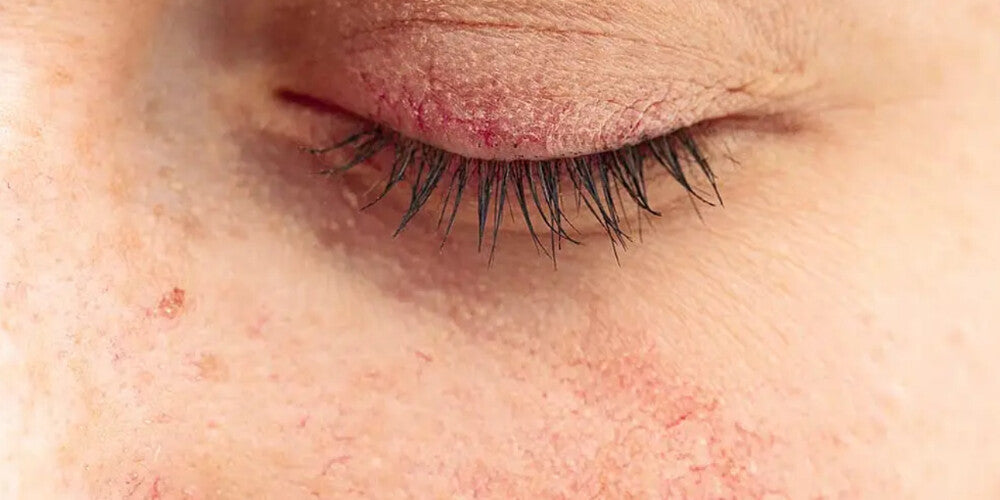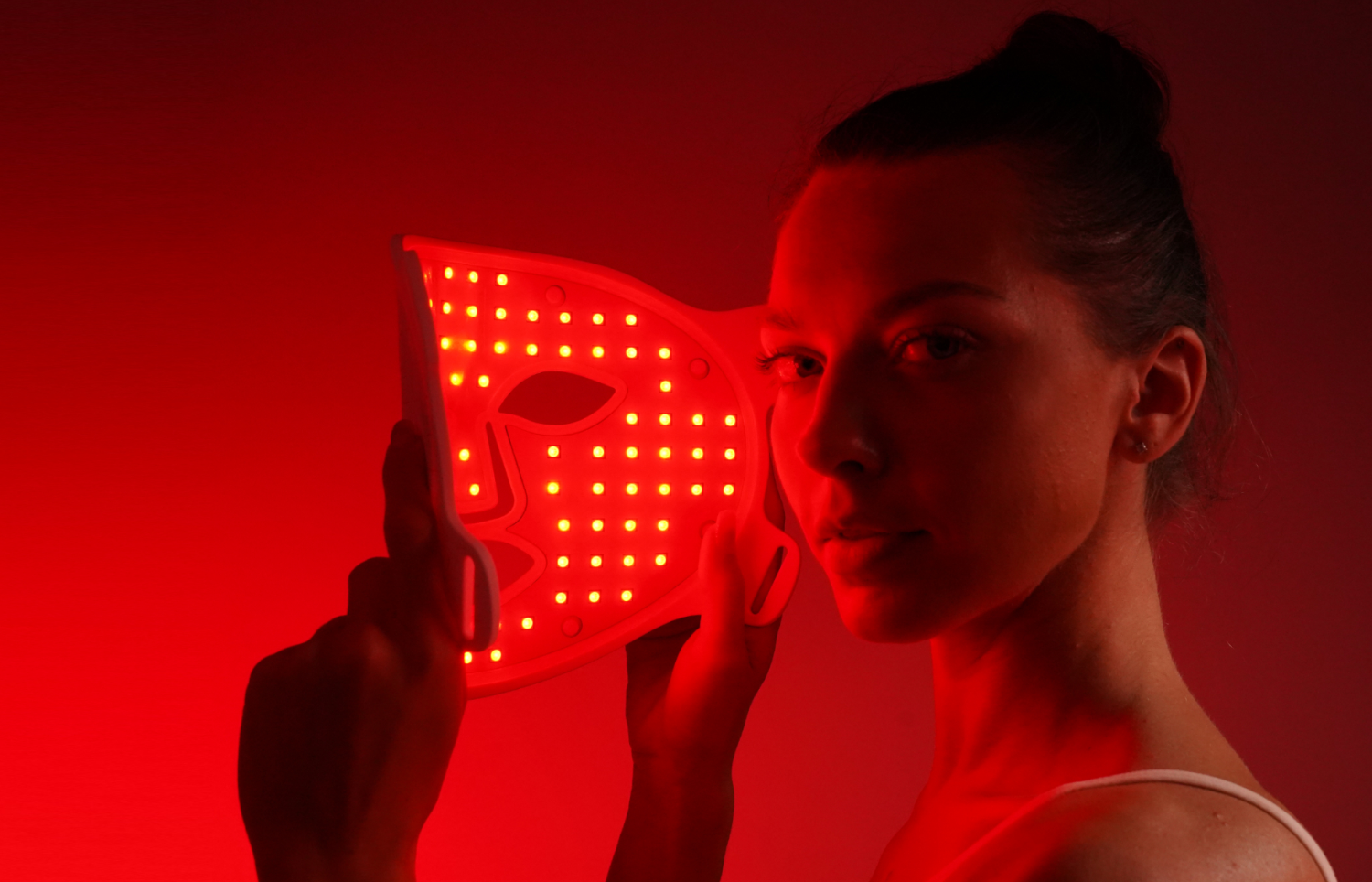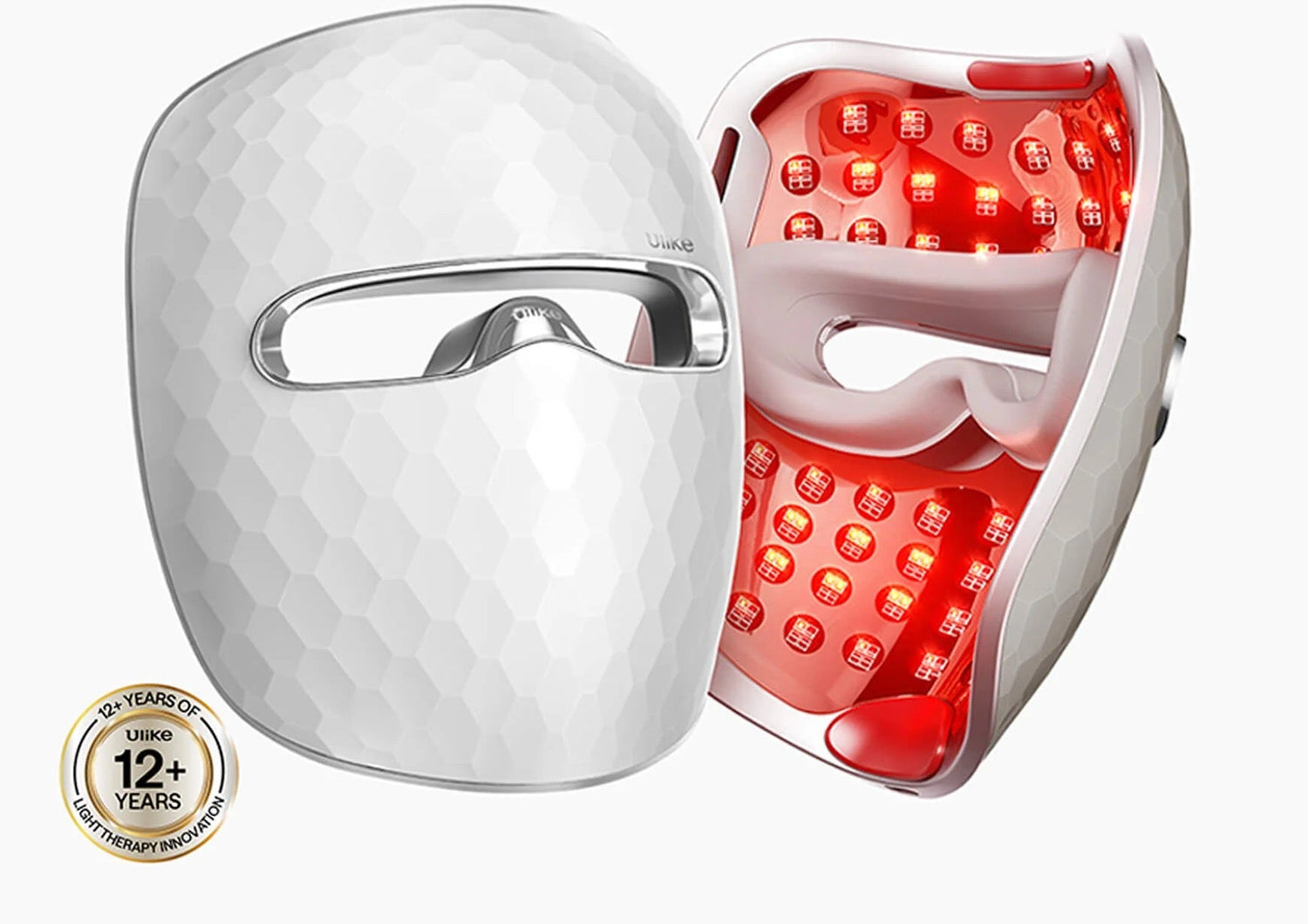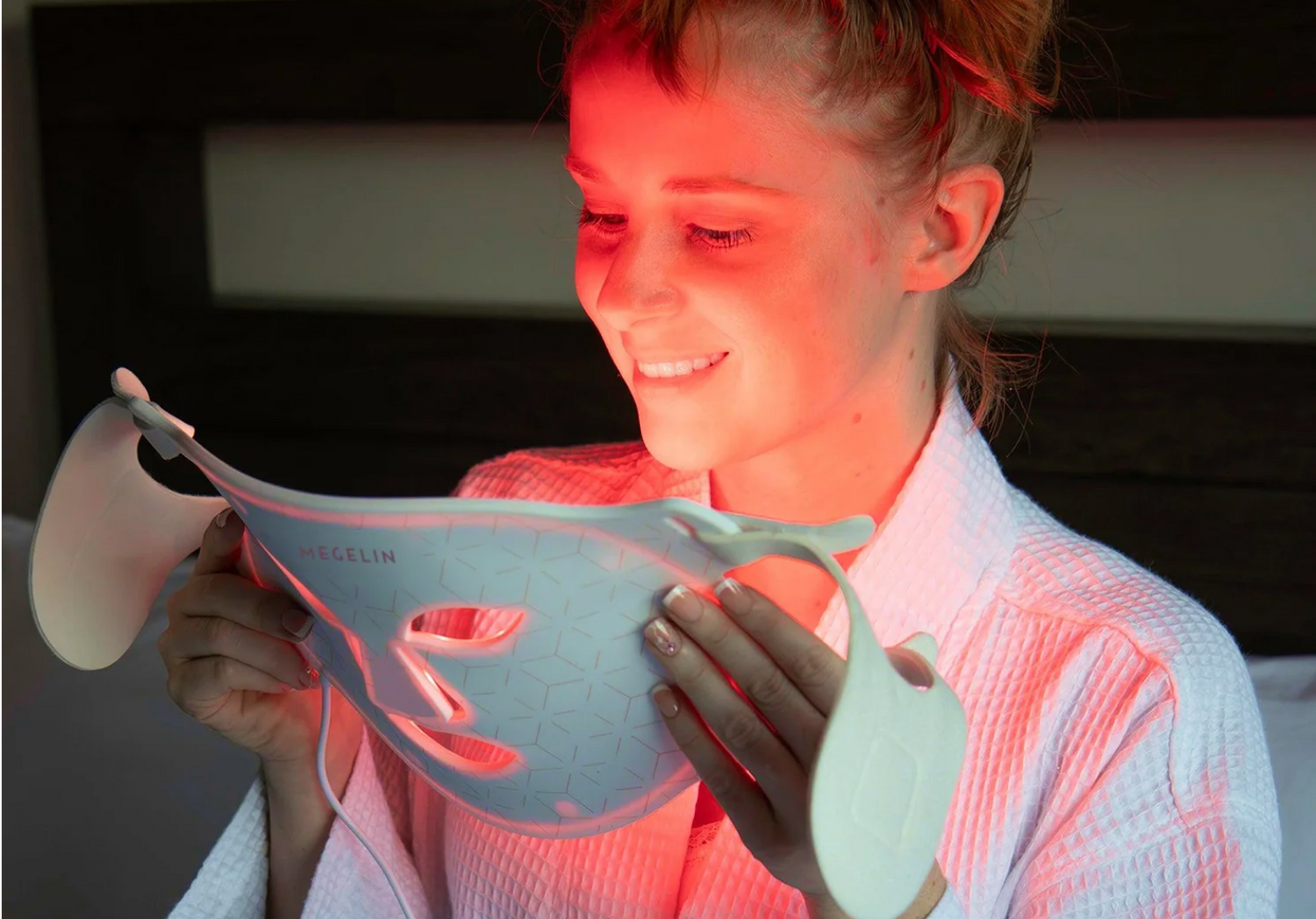
How Light Therapy Can Transform Rosacea Treatment
megelinbeautyAre you struggling with persistent facial redness and seeking relief? Light therapy for rosacea may be the breakthrough you've been waiting for. This innovative treatment harnesses the power of specific wavelengths of light to address the underlying causes of rosacea, offering hope to those who have found little success with traditional methods. From reducing inflammation to promoting skin rejuvenation, light therapy has emerged as a promising option for managing this challenging skin condition.
Recent advancements in LED light therapy and intense pulsed light therapy for rosacea have shown remarkable results in clinical studies. These treatments work by targeting rosacea triggers, decreasing facial redness, and improving overall skin health. Whether you're considering red light therapy, blue light therapy, or a combination approach, understanding the potential benefits and limitations of light treatment for rosacea is crucial. This article explores how different types of light therapy can transform rosacea management, helping you make informed decisions about your skin care routine and treatment plan.
The Challenge of Treating Rosacea
Rosacea, a chronic inflammatory skin condition affecting millions of Americans, presents significant challenges for both patients and dermatologists. This common disorder causes increased visibility of blood vessels in the face, resulting in a red or flushed appearance, and can lead to small pimples or sores [1]. While not a significant health risk, rosacea can leave individuals feeling self-conscious if not well-managed.
Traditional Treatment Methods
Conventional approaches to managing rosacea typically include:
- Topical medications: Metronidazole and azelaic acid are commonly prescribed to address inflammatory changes.
- Systemic antibiotics: Tetracyclines, such as doxycycline and minocycline, are used to suppress inflammation and redness.
- Oral medications: In some cases, isotretinoin may be prescribed to help reduce skin bumps [2].
These treatments aim to reduce symptoms and control flare-ups. However, their efficacy can be limited, especially in addressing persistent erythema (redness) [3].
Limitations of Conventional Approaches
Despite the availability of traditional treatments, managing rosacea remains challenging for several reasons:
- Limited efficacy: Topical treatments often show restricted effectiveness due to the skin's barrier properties, hindering proper drug delivery [3].
- Chronic nature: The disease's remitting and relapsing course can lead to patient dissatisfaction with conventional methods [3].
- Persistent erythema: Current topical treatments often fail to adequately address persistent facial redness [3].
- Side effects: Some treatments, such as topical corticosteroids, should be avoided due to potential exacerbation of symptoms [3].
- Varied response: No single treatment is suitable for every rosacea patient, necessitating personalized approaches [1].
These limitations highlight the need for more effective and targeted therapies. Recent advancements, such as laser and light therapies, offer promising alternatives. Studies suggest that up to 75% of rosacea sufferers may see significant symptom reduction in three or fewer laser treatments [1], providing hope for those struggling with conventional methods.
Light Therapy: A Breakthrough in Rosacea Management
Light therapy has emerged as a promising treatment option for individuals struggling with rosacea. This innovative approach offers hope to those who have found limited success with conventional methods. By harnessing the power of specific wavelengths of light, these treatments can effectively target the underlying causes of rosacea, providing relief from persistent symptoms.
Types of Light Therapy for Rosacea
Several types of light therapy have shown efficacy in managing rosacea:
- Intense Pulsed Light (IPL) Therapy: This treatment uses light waves of different lengths to target skin redness. IPL damages blood vessels, resulting in fewer visible capillaries and reduced pigmentation [4].
- Pulsed-Dye Lasers (PDL): These lasers, along with IPL, are particularly effective in reducing inflammation and redness. Most patients report a significant reduction in redness after 1-3 treatments [4].
- Broadband Light (BBL) and Lumenis M22 IPL: These advanced therapies use light energy to target and reduce visible rosacea symptoms, providing clearer and more even-toned skin [5].
- LED Light Therapy: Recent studies have shown promising results with light-emitting diodes (LEDs), particularly blue light (400-470 nm) and red light (630 nm). These wavelengths can help reduce inflammation and regulate sebum production [6].
Mechanism of Action
Light therapy works by penetrating the skin at various depths, triggering a series of natural reactions in skin cells. For instance, red light therapy penetrates 8-10 millimeters into the skin, stimulating mitochondria to produce more energy and accelerate healing and rejuvenation processes [7].
The light energy is absorbed by hemoglobin in blood vessels and melanin in pigmented areas, leading to their gradual reduction. This process results in decreased redness, fewer visible blood vessels, and improved overall skin texture [5].
Furthermore, light therapy has shown to have anti-inflammatory properties, helping to soothe the skin and reduce redness and irritation associated with rosacea. Some studies suggest that certain wavelengths can even interact with the skin microbiome and modulate the immune response, potentially addressing the root causes of rosacea [6].
Effectiveness of Light Therapy for Different Rosacea Subtypes
Light therapy has shown promising results in treating various rosacea subtypes. Each subtype responds differently to specific light treatments, making it essential to understand the effectiveness of different approaches.
Erythematotelangiectatic Rosacea
For erythematotelangiectatic rosacea (ETR), which presents with persistent erythema and telangiectasia, a combination of treatments including light therapy has proven effective. Intense Pulsed Light (IPL) and Pulsed Dye Lasers (PDL) are particularly beneficial for this subtype. These treatments can reduce visible blood vessels and decrease redness. Studies have shown that most patients experience a 50% to 75% reduction in visible blood vessels after 1 to 3 treatments [1]. IPL penetrates the skin deeper than PDL, targeting multiple chromophores at varying depths, including melanin and hemoglobin [8].
Papulopustular Rosacea
For papulopustular rosacea, light therapy has demonstrated efficacy in reducing inflammation and papules. A study using a combination of blue (480 nm) and red (650 nm) light-emitting diodes (LEDs) reported a reduction in symptoms such as burning and itching, as well as a decrease in erythema and papules after five sessions [6]. This approach leverages the anti-inflammatory properties of red light and the ability of blue light to interfere with sebocyte proliferation.
Phymatous Rosacea
Phymatous rosacea, characterized by thickening skin, can be treated effectively with CO2 and YAG lasers. These skin resurfacing lasers help treat skin thickening, scarring, or bumps caused by rosacea. They can also aid in reshaping bulbous noses by exfoliating the skin's outer layer and stimulating new skin growth [4]. Early treatment of thickened skin tends to yield the best results.
Ocular Rosacea
For ocular rosacea, Intense Pulsed Light (IPL) therapy has shown notable effectiveness. IPL works by reducing inflammation and stimulating collagen production. It helps combat conditions associated with ocular rosacea, such as blepharitis, meibomitis, and dry eye [9]. A study investigating IPL combined with meibomian gland expression (MGX) for ocular rosacea with dry eye symptoms reported significant improvement in symptoms by the fourth treatment visit compared to MGX alone [10].
Choosing the Right Light Therapy Device for Rosacea
Professional vs At-Home Devices
When selecting a light therapy device for rosacea, individuals must consider the differences between professional and at-home options. Professional treatments utilize advanced technology, allowing for precise targeting of skin concerns [11]. These devices operate at higher intensities and cover larger areas, providing noticeable results in fewer sessions [11]. Trained technicians administer professional treatments, customizing protocols based on individual skin types and concerns [11].
At-home devices, while convenient, have limitations. They operate at lower intensities and may require more time for treatment [11]. Results from at-home devices can be inconsistent due to irregular treatment patterns [11]. However, some at-home options, such as LED masks, can offer subtle improvements in skin appearance [12].
Key Features to Consider
When choosing a light therapy device, consider the following features:
- Light spectrum: Devices emitting red, near-infrared, and blue light are beneficial for rosacea [13].
- FDA clearance: Ensure at-home devices are marked "FDA cleared" or "FDA approved" [12].
- Wavelength combination: Look for devices that offer multiple wavelengths for comprehensive treatment [13].
Usage Guidelines
To maximize the benefits of light therapy for rosacea:
- Consult a dermatologist before starting treatment [12].
- Use eye protection during sessions [12].
- Follow device instructions carefully [12].
- Be consistent with treatments for optimal results [12].
- Avoid sun exposure after treatment and apply extra sunscreen [12].
Remember, while LED light therapy is generally safe, it may not be suitable for everyone, particularly those taking certain medications or with a history of skin cancer [12].
Conclusion
Light therapy has emerged as a game-changer in rosacea treatment, offering hope to those who have struggled with traditional methods. By harnessing specific wavelengths of light, these innovative treatments target the root causes of rosacea, leading to reduced inflammation, decreased redness, and improved skin health. The versatility of light therapy, from professional IPL treatments to at-home LED devices, provides options to suit various needs and preferences.
As research continues to advance, light therapy is set to play an increasingly crucial role in managing rosacea. While it's not a one-size-fits-all solution, its potential to transform rosacea treatment is undeniable. For those grappling with persistent symptoms, exploring light therapy options with a dermatologist could be a step towards clearer, healthier skin and improved quality of life.
FAQs
Can light therapy effectively treat symptoms of rosacea?
While LED light therapy does not cure rosacea, it can significantly alleviate key symptoms such as skin thickening, redness, and discomfort. It is often used as part of a broader treatment strategy to manage this skin condition.
How many laser therapy sessions are required to treat rosacea effectively?
The severity of rosacea symptoms influences the number of laser treatments needed. Generally, individuals undergo between two to eight treatments, scheduled about four weeks apart, to achieve optimal results.
Is green LED light beneficial for rosacea?
Although it does not cure rosacea, green LED light therapy can be effective in managing symptoms and reducing inflammation. It is a viable option to consider adding to your skincare routine if you are dealing with rosacea or similar skin issues.
Is there a permanent solution for treating rosacea?
Currently, there is no permanent cure for rosacea. As the condition progresses, permanent redness and other symptoms such as enlarged capillaries and pustules may develop. In severe cases, especially in men, it can lead to an enlarged and reddened nose known as rhinophyma. The condition tends to worsen with age, and its exact cause remains unknown.
References
[1] - https://www.aad.org/public/diseases/rosacea/treatment/lasers-lights
[2] - https://www.webmd.com/skin-problems-and-treatments/what-to-know-about-laser-treatment-rosacea
[3] - https://us.currentbody.com/blogs/editorial/how-led-light-can-help-rosacea
[4] - https://www.westlakedermatology.com/blog/laser-and-light-therapy-treatments-for-rosacea/
[5] - https://www.pulselightclinic.co.uk/rosacea/understanding-rosacea-and-light-based-treatments
[6] - https://www.ncbi.nlm.nih.gov/pmc/articles/PMC6988247/
[7] - https://drmuller.com/blog/research/red-light-therapy-rosacea/
[8] - https://www.ncbi.nlm.nih.gov/pmc/articles/PMC4135105/
[9] - https://www.emvc.net/blog/IPL-s-the-best-treatment-for-ocular-rosacea
[10] - https://www.mayoclinic.org/medical-professionals/ophthalmology/news/ipl-mgx-improves-dry-eye-symptoms-more-than-mgx-alone-in-treating-ocular-rosacea-with-dry-eye/mac-20521052
[11] - https://garzasurgery.com/professional-ipl-laser-treatments-vs-at-home-devices/
[12] - https://my.clevelandclinic.org/health/treatments/22146-led-light-therapy
[13] - https://www.lighttherapyinsiders.com/what-light-therapy-is-best-for-rosacea/










